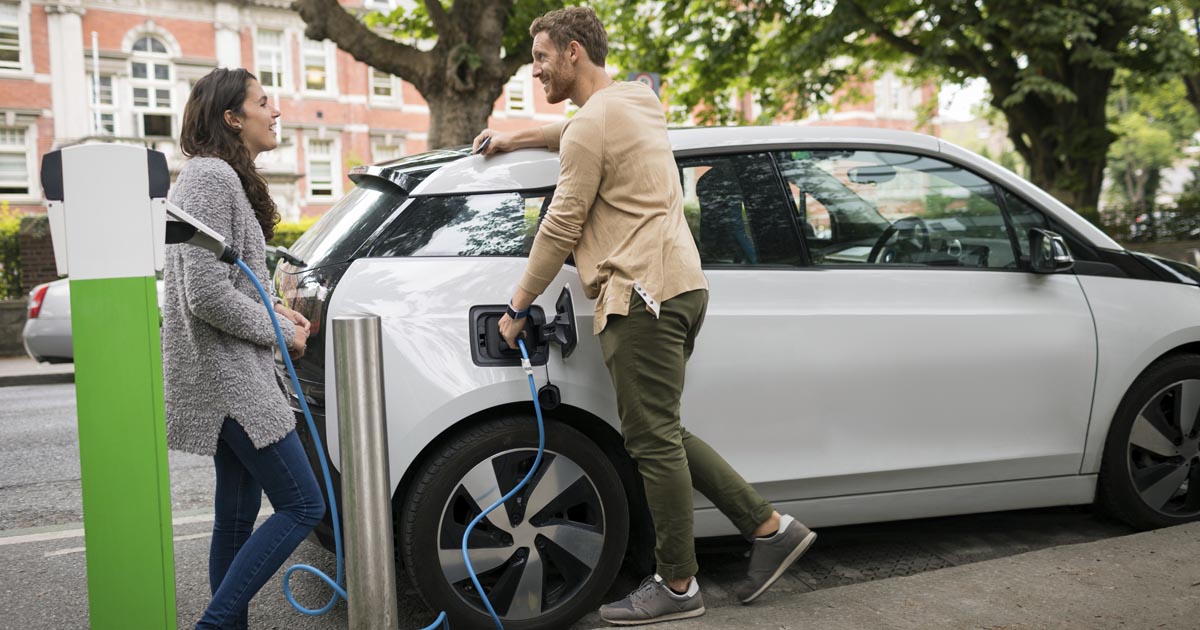Electric cars are good for the environment. But what happens when the battery no longer works? Is it then electrical waste? In fact, there are only interim solutions so far, writes mobility expert Don Dahlmann in his new column on //next.

The amount of new electric vehicles coming onto the market is continuously increasing worldwide. This also means that more and more batteries are being used. On the one hand, this is good for the climate, but it also raises an as yet unresolved question. What happens to the batteries of the e-cars when they have to be removed from the vehicles because they no longer have enough power? The question is not so easy to answer, because every manufacturer relies on different solutions.
In fact, the complete recycling of batteries is still in its infancy. Until now, even the reprocessing of small smartphone batteries was too cost-intensive and not worthwhile. A large proportion of the batteries simply ended up in the rubbish. Yet the batteries contain a lot of expensive and sometimes rare materials that cannot simply be replaced. While the small smartphone batteries contain only a few grams of lithium, the situation is different for the large e-car batteries. For example, a medium-sized car battery of 50 kWh contains eleven kilos of cobalt, six kilos of lithium and a whopping 32 kilos of nickel. These are all valuable materials, some of which have to be extracted from the earth with great effort and at considerable cost.
The recycling of batteries is still in its infancy. The problem is that the materials have to be extracted from the compact battery cells in a very complex way. It's like trying to separate a baked cake into its ingredients. How do you separate the flour from the sugar? It is possible by means of a chemical process, but it is extremely time-consuming. And such a complex process is also needed for recycling the highly complex lithium-ion batteries. To date, there are only a few plants worldwide that can do this on a large scale. In Europe, there is even only one plant in Belgium, which is already operating at full capacity.
New systems are emerging, but the question is also whether one really has to throw away the old batteries after they have done their job in the car. Normally, batteries have passed their zenith when they can only deliver 70 per cent of their power. This happens after 12 to 15 years, which is roughly the lifetime of a vehicle. Therefore, replacement is usually not necessary, especially since it is also expensive.
Many manufacturers rely on disassembling the batteries after use and re-bundling the individual battery cells. They then find a second life, for example, in storage devices that can be used either at home or in industry. Because it is not only cars that are changing, the way we deal with energy will also change. Home storage devices, for example, are important for modern electricity grids. This is because they make it possible to improve the distribution of available energy.
Modern storage devices can not only store the energy generated by solar panels, which can then be used at night. Even without solar cells on the roof or in the garden, home storage units help to reduce electricity costs. They can be charged overnight, i.e. when electricity is cheapest, so that they can be used when the price of electricity is high. Modern storage systems also work bi-directionally. This means they can also feed electricity into the grid. In this way, fluctuations in the grid can be better balanced out.
The other question is whether you can remanufacture the old batteries. Technically, this is theoretically possible. The batteries could be given a fresh cell treatment. Defective cells would be replaced and new ones installed. At the moment, this is still very time-consuming and expensive, but if there is more demand for this kind of service in the future, the costs will of course go down. For example, batteries of large vehicles could be broken down and converted into smaller units that can then be used again in new cars. That would significantly reduce the cost of e-cars - especially in the lower price segment.
Sooner or later, however, even the best cell burns out. Then the only way forward is recycling. As mentioned, the world is not yet in such a good position. But experts foresee a market worth billions. Because the boom in e-cars is already leading to a shortage of important metals, such as cobalt. As a result, prices are rising, also because extraction is becoming more and more costly. Recycling can solve these problems, because cobalt is only used up to a very small extent in batteries.
Sustainability is the top priority for the future. This also applies to mobility. If we manage to get batteries into a circular economy, we will have achieved another important goal. Because then the CO2 rucksack that the batteries are still carrying around with them at the moment will be reduced. At the moment, every battery has to be produced from scratch. If we use existing materials from recycling, this burden is reduced by up to 70 percent. This would make a new car almost CO2-neutral.
Text: Don Dahlmann
Most popular